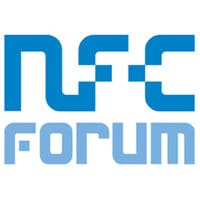The NFC Forum has released a new candidate specification that extends the functionality of NFC devices to include formal support for a new category of NFC tag. NCI 2.0 also enables tag data stored on an NFC device, such as an airline boarding pass, to be read even when a passenger’s smartphone is switched off.

“Type V technology provides a single communication mode that is compatible with all existing memory tags implementing the ISO/IEC 15693 standard,” Jürgen Böhler, vice-chair of the NFC Forum’s technical committee, told NFC World. “Supporting Type V technology enables NFC Forum devices to now communicate with existing products that support ISO/IEC 15693, such as tags in library books.”
NFC Controller Interface Candidate Technical Specification Version 2.0 (NCI 2.0) also introduces RF Interface Extensions, extends the Listen Mode routing mechanism to provide more flexibility for NFC devices with multiple secure elements, adds a high-level RF interface and offers support for an Active Communication Mode (ACM) for peer-to-peer (P2P) communication.
A new specification, RTD Device Information 1.0, has also been published. This defines a Device Information record type that “conveys fundamental device model and identification information,” the NFC Forum says, to “convey host information in a record format that can be used across different carrier types or service types.”
A second candidate specification, NFC Logical Link Control Protocol (LLCP) Candidate Technical Specification Version 1.3, has also been released and the NFC Analog Technical Specification has been updated. The new Version 1.1 “addresses the analog characteristics of the RF interface of the NFC Forum device. This new version incorporates technical changes related to the influence of the listening device on the operating field.”
Autonomous tag emulation
An autonomous tag emulation feature in NCI 2.0 will enable tags stored on NFC devices to be read when a device is not switched on, Böhler explained to NFC World.
“In the existing NCI specification, the emulation of a NFC Forum tag can be implemented by an application running on the application processor,” he explained. “That means the NFC device must be switched on and the application processor must be active. The new feature allows the content of the emulated NFC Forum tag to remain available for later use, even if the NFC Forum device is switched off or out of power.
“That can be especially useful, for example, for things like airline boarding passes which should be able to work independently of the state of the NFC Forum device. Now an airline boarding pass can be stored on the emulated NFC Forum tag within the NFC controller and made available later at the boarding gate even if the user has already switched off the phone in preparing to board the plane.
“As an additional benefit, there is a performance improvement because no time-consuming task switches are necessary at the application processor to emulate the NFC Forum tag. This will help increase throughput at access gates.”
RF Interface Extension
“The RF Interface Extension is a new concept introduced in NCI 2.0 that optimizes and accelerates the communication between the NFC controller and application processor within an NFC device,” Böhler added. “It is currently used for two purposes: First, to activate the autonomous exchange of Symmetry Protocol Data Units (PDUs) to maintain an ongoing LLCP link without generating additional communication on NCI between the NFC controller and the main processor. This avoids unnecessary interruptions of a running P2P application on the application processor, thereby helping to improve overall performance.
“Second, to activate the aggregated mode for communication with NFC Forum tags. Doing so allows a batch of RF commands to be transferred within a single NCI message. This avoids time-consuming task switches at the application processor, helping to improve overall performance when an NFC Forum device communicates with NFC Forum tags.”
NDEF RF interface
The new NDEF RF Interface is designed to make it easy to integrate NFC Forum technology into embedded devices “that do not have a complex operating system with a complete NFC stack available”. For this use case, Böhler explained, “the NFC controller implements all necessary mechanisms to manage an NFC Forum tag based on one of the NFC Forum tag types.
“That means the embedded device’s processor does not need to implement the command sequences for the different NFC Forum tag types, freeing it to concentrate on reading or updating NDEF messages from NFC Forum tags independent of their type. This feature could ease, for example, the integration of NFC Forum tags into a washing machine reading a NFC Forum tag providing information about the used washing program.”
LLCP v1.3
Version 1.3 of the LLCP specification “adds an unauthenticated secure data transport option to ensure privacy and confidentiality of messages exchanged between peer devices”, the NFC Forum says.
“When two NFC Forum devices supporting LLCP 1.3 are brought together, they can establish a secure P2P connection in which all exchanged LLCP messages are encrypted using the Advanced Encryption Standard (AES),” Böhler told NFC World.
“The necessary initial key exchange is managed using public keys based on Elliptic Curve Diffie-Hellmann. The common secrecy AES key is derived from this autonomous key exchange. This mechanism provides data confidentiality and integrity for P2P communication and prevents, for example, eavesdropping by nearby third parties.”
“With the release of these specifications, the NFC Forum’s technical working groups have delivered capabilities that make NFC communications more robust, flexible, information-rich, and secure,” comments Koichi Tagawa, chairman of the NFC Forum. “The specifications also help to ensure a great user experience across the broadest range of use cases. We thank our working groups and technical committee for their outstanding work.”
Next: Visit the NFCW Expo to find new suppliers and solutions